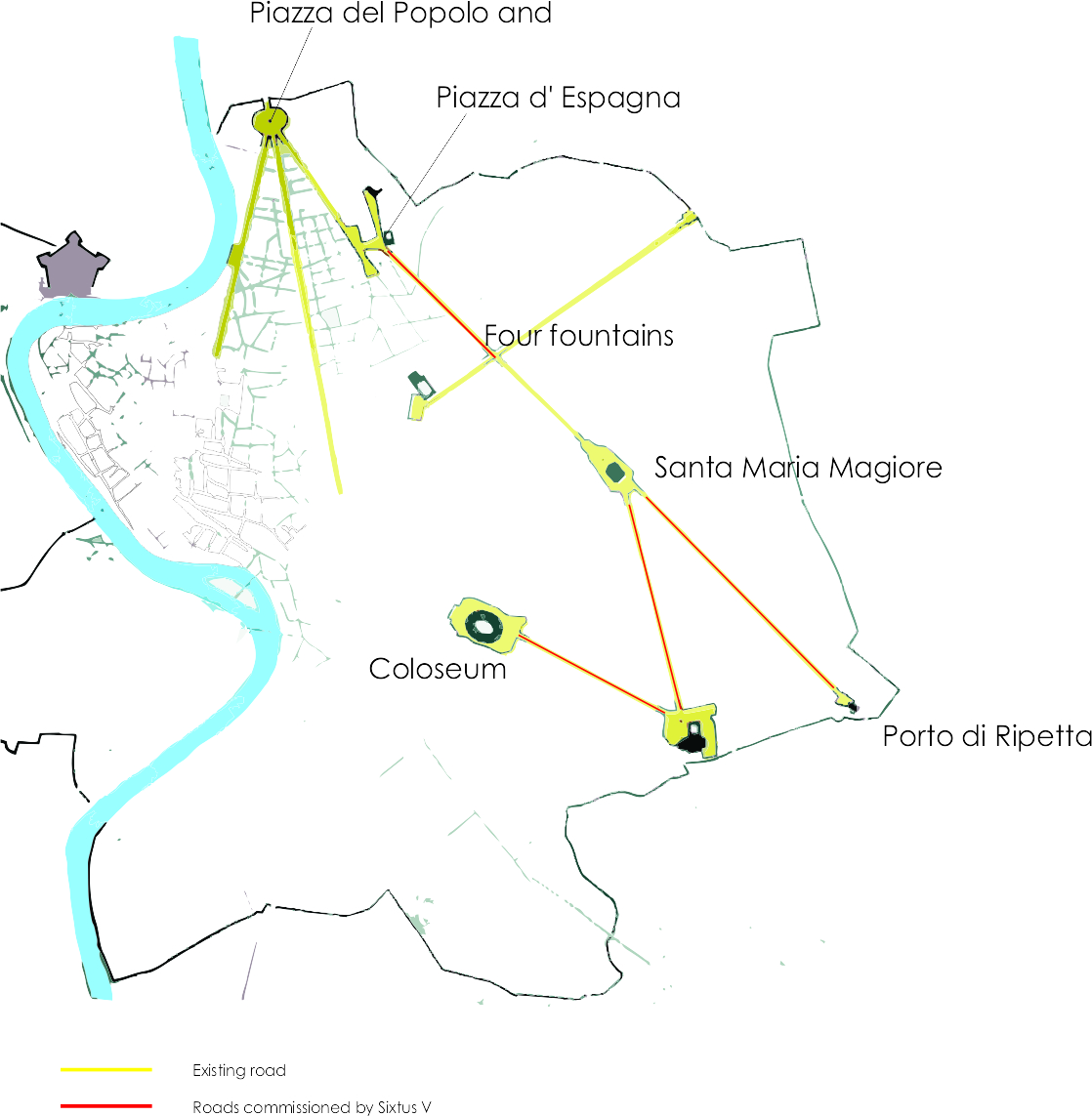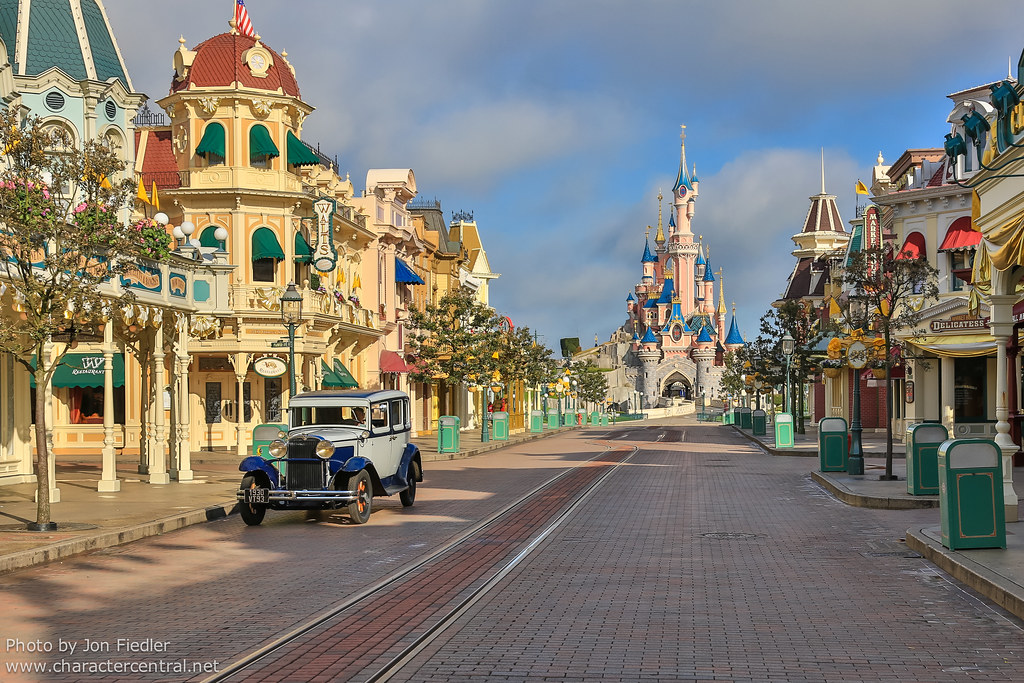I spent a few days in Paris a couple of years ago. While that's certainly not enough time to really get to know a city, especially a city like Paris, I've also spent quite a bit of time getting to know the history of the City of Light, and I find it at once fascinating and hopeful. One of the most interesting chapters of the history of the city lies in Baron Haussmann.










His plans for the "renovation" of Paris, which - admittedly - was in pretty rough shape in the mid-1800s (no wonder there were so many riots!) finds parallels throughout history. His motivation was not only to increase the health of the city, but to improve transportation in and around the city. It is perhaps apocryphal that his efforts were designed to help troop movements to quell riots and circumvent barricaded roadways, but it did help with navigation and way-finding, something motorists and tourists would appreciate for generations.

In this, he may have been inspired by Sixtus the Fifth, who was Pope in the late 1500s and who devised a plan to revamp Rome so that pilgrims could make their way around the place easier. Here's his plan:

Notice a couple of similarities:
1. The roads link major destinations. In the case of Paris, things like the Arc de Triomphe and the Ile de la Cite became focal points, while in Rome it was the Vatican, the Colosseum, and other major landmarks. This gives order and direction to the city, as well as providing easy access to important sites. With Haussmann, where there wasn't a major landmark, he had one built:

One thing that Haussmann did further is to apply a kind of continuous facade to these broad, new avenues he was pushing through the city. Uniform in architectural style, building height, and massing, these present a beautiful backdrop to any Parisian adventure. These buildings become the face of Paris - what one remembers about the city:

There is something beautiful about this uniformity and regularity, something reassuring and constant. Yet, it lacks the earthy, gritty reality of a city that acknowledges its history (which is why I enjoyed London so much more, although I did enjoy neighborhoods like Montmartre). Paris feels like scenery set up for a play or opera - lovely, but artificial. Not unlike this:

Clearly Main Street USA (Disneyland) takes its cues from Haussmann's work, which inspired downtown areas all over the country and the world. Yet, even in Disneyland, there's an irregularity that provides visual interest and complexity... The streetscapes in Paris were almost forbidding and cold in their constant, unyeilding regularity. The buildings in Disneyland are approachable, the streetscapes in Paris are not. Further, the storefronts of the Disneyland Main Street interrupt the flow along the street, providing interesting 3-dimensional pockets and porches, balconies and pillars which invite people to stop and linger. The regular lines of buildings in Paris, all colonnades and horizontal lines, encourage movement down the road, forming a kind of one-point perspective study that moves the eye and the body down to the anchor point at the end of the street. Which is the point of a street, after all - movement - but in Paris it's often heavy-handed and unsettling.
2. Haussmann and Sixtus the Fifth drove these planned roads through established neighborhoods without regard to the potential impact these roads would have on the existing neighborhoods and their social fabric. Indeed, one wonders whether they acknowledged this social fabric at all. Clearly there's something going on - a kind of aristocratic imposition of order on chaos, of the divine right on the great unwashed, of royalty on commonness. Perhaps things might have turned out better for Rome and for Paris if this attitude had been different.

But all of this puts me in mind of New York in the 50s and 60s. Robert Moses was the man back then. His vision for revamping New York was along the same veins as that of Haussmann and Sixtus the Fifth. (I love saying "Sixtus the Fifth, by the way) :) He was heavy-handed and authoritarian, driving highways and freeways across and through the Boroughs of New York. This man's vision knew no bounds, and he ran rough-shod and nearly unchecked across the landscape of New York.

His goals - like so many "urban renewalists" were to bring ease and health back to a dirty and inconvenient city. He drew on ideas of Le Corbusier and other modernists and looked to order and regularity to bring sanity and sanitation to the city. His highways provided a way for people to go through New York without ever even being on the ground.

He accomplished much of his plans, but then he ran across Jane Jacobs, and post-modern city planning was born, where things like the social implications of planning, transportation, and urban renewal were taken into account. That's a discussion for another day. :)
If you'd like to have a more detailed exploration of Mr. Haussmann and his work, have a look at this article by the BBC:
http://www.bbc.com/culture/story/20160126-how-a-modern-city-was-born
http://www.bbc.com/culture/story/20160126-how-a-modern-city-was-born
There's so much more I wish I could write... maybe I'll come back to this later.
Comments